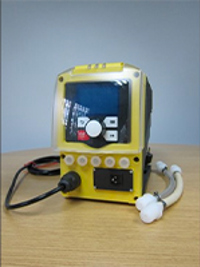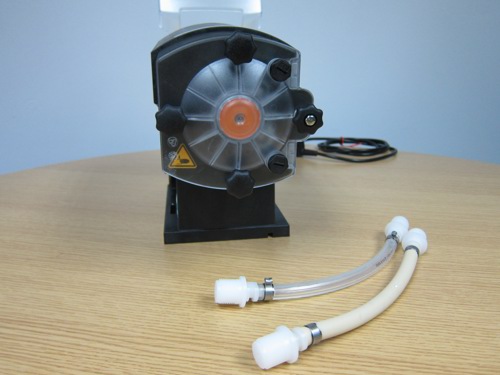Slurry Handling Requirement
Pilot plants are a smaller scale version of a newly designed production facility which are built for the testing of methods, procedures, process and specification of equipment, whilst ensuring that the intended design produces the outcome or recipe they require.
Often built for establishing proof of concept for investors, they offer a lower risk trial of a theory prior to commitment of a much larger design, often requiring heavy investment.
A leader in pilot plant prototype design, contacted us in need of a pump to handle a battery slurry for slot die coating onto fine films of metal. This is a crucial step in increasing production of lithium-ion batteries and is used in some applications for the coating of electrodes on to foils for improved conduction and battery performance.
They required a unit to undertake testing of various blends of battery slurry coatings and perform experiments with the ability to not only control how much material was applied to films, but also ensure a wide range of high viscosity mixtures could be handled utilizing differing blends of chemicals. The exact concentration of chemicals was not known, and we would have to ensure any unit selected would be compatible in their process and not fail prematurely or part way through their process.

What is Slot die coating
Slot die coating is a technique for applying a liquid solution, slurry or mixture on to thin surfaces such as film, metal, fabric or foil. It is a quick efficient scalable method of applying coatings via a wide angled low pressure nozzle.
Usually the liquid which is to be applied is dissolved within a solution forming a pumpable slurry as their natural state can be solid. The fluid can often have a unique chemistry being a mixture of solvents and acidic materials with suspended solids and particulates. As it is a slurry it can also have a high viscosity making transfer difficult.
Coatings are applied via the nozzle on to surfaces quickly, as the material is conveyed below the slot die as per the below illustration.
As chemical compatibility would not be known for the various mixtures which would be handled, the customer needed a design which would be widely unaffected by changes in viscosity, presence of solids, and handle a range of acids and solvents.

Our Versatile, low Maintenance Solution
We selected and specified our DSM Control Peristaltic Metering Pump with its LCD display enabling users to alter the dosed amount from 10ml to 30L/hour easily with very little training. Twin interchangeable hoses in Thermoplastic (TPV) and Polyurethane (PUR) for use with acids, alkalis and solid laden media.
A peristaltic Metering pump provides a host of benefits over other designs of dosing pump making this ideally suited for this application. These benefits include:
Full Process Control
A 3000:1 turndown ratio enables the unit to cover a very wide range of flows, whilst remaining easy to control at the touch of a button next to the LCD display. It has ports for inlet control via a signal from another process, timer, or pressure control system enabling dosing to be fully automated via a PLC system.
Simple hose change
In Peristaltic design there is only one wearing part - the hose, meaning spares holding and maintenance time is vastly reduced. Maintenance can be undertaken without special tools, training or experience due to the unit only containing one part with hoses replaced in minutes.
Hoses can easily be swapped ensuring full process control during experiments as well as prevention of cross contamination during testing. The unit can operate without fluid, and not suffer damage as it does not contain difficult to maintain seals or valves which require replacement.
Suitability for Gaseous media, Solids and Gas
As such designs do not contain valves, it is non clogging and solid handling without loss of performance. When handling fluids which can gasify, peristaltic pumps do not have valves which can open under pressure. Furthermore this design enables a wide viscosity handling up to 200,000mpas.
Non Clog Design
Diaphragm metering designs have valves which can clog with small solids restricting performance or require cleaning if calcification occurs. In applications handling liquids which gasify, the pressure can cause the valves to open whilst the unit is off.
Self Priming without additional accessories
Peristaltic pumps are self priming, are great for high suction lifts and do not require accessories such as backpressure valves. They can be controlled via a 4-20ma signal, timers, process control systems or manually.
Having such a versatile easy to use low maintenance unit is likely to enable the research facility to concentrate solely on their research and complete testing far more easily without fear of damaging their unit; with reduced operational downtime when compared with other designs.
If you have a slurry transfer or solid handling application, and are unsure of the correct solution, visit www.northridgepumps.com to see how we can help, or contact us on +44 (0) 1773 302 660.












Water Sector Talent Exodus Could Cripple The Sector
Maybe if things are essential for the running of a country and we want to pay a fair price we should be running these utilities on a not for profit...